No Sleep for Residents Near Santa Barbara Airport
Community Gathers at Goleta Council to Vent on Harms from Aircraft Operations
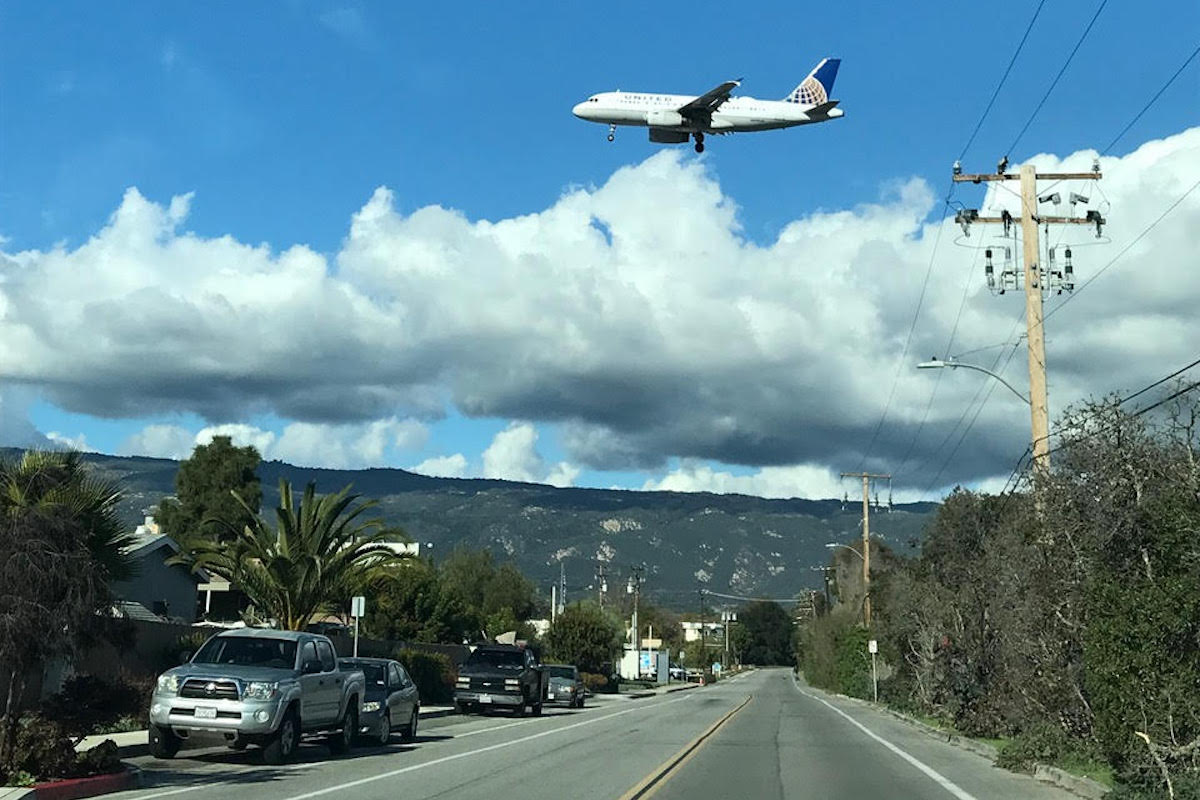
Residents to either end of the main runway at Santa Barbara Airport haven’t had a decent night’s sleep in two years. They populated a Goleta City Council workshop on Wednesday evening demanding solutions, or at least explanations, for the misery they’ve been enduring living in the City of Goleta near an airport owned and operated by the City of Santa Barbara.
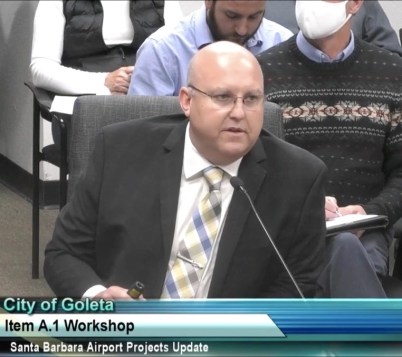
The new airport manager, Chris Hastert, was at least there with his staff to listen and offer some answers. The previous airport manager, Henry Thompson, had been notable by his absence from the public eye during his two years with Santa Barbara before moving on to Fresno in December 2021. Hastert arrived three months ago from managing Santa Maria’s airport, and Oxnard and Camarillo’s before that, all of them encircled by jurisdictions that didn’t have an ownership interest in the airport, he said.
The issues were manifold: the 5:15 a.m. departure time by airlines, the black soot falling on homes, the night-and-day noise of aircraft far and wide, the onetime noise abatement corridors, the complaints system, corporate jets, and a planned airport expansion. Fully 18,000 noise complaints were logged as of October from across the south coast.
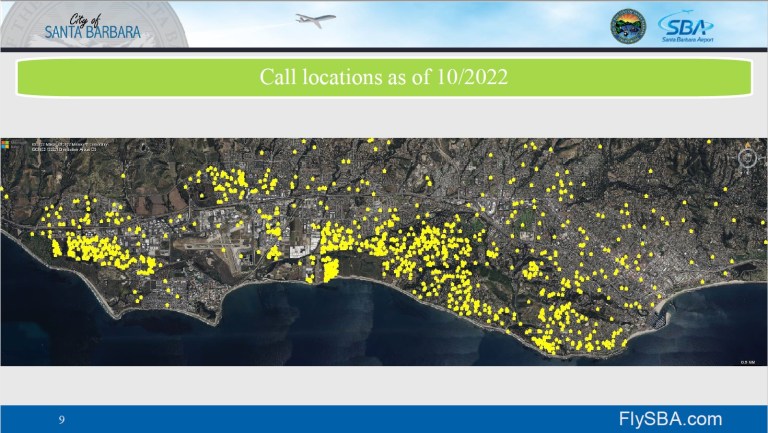
To these, Hastert and his team gave some information in reply: Airlines had moved to early morning departures in order to make connections at the hub in Denver, which had moved its times up. Clouds sometimes influenced pilots to come in lower for visibility’s sake. When UCSB built a new dormitory, the voluntary noise abatement pattern was changed to go away from the university and toward Ellwood instead — a change Councilmember Stuart Kasdin opined made little sense as many more people lived in Ellwood than on campus at a UCSB dorm.
Hastert’s team said a crowded airport was spurring improvement projects: a parking structure to the other side of the rental lot and new terminal building wings to the north and south. As well, the taxiway on the north side of the field would be extended; no new runways were planned; and two new leaseholds were being developed for fixed base operators who handle private jets.
And the airport planned to get more information to address problems: Three of the four airlines had a proprietary approach that they’d worked out with the Federal Aviation Administration (FAA) that seemed to cause fewer complaints; Hastert and his team would ask if the fourth airline was working with the FAA on a similar quieter approach altitude and route. Regarding “good weather runways,” they would monitor which runways were being used and see if tailwinds were indeed a factor, or if the control tower was choosing the runway and route regardless of weather conditions.
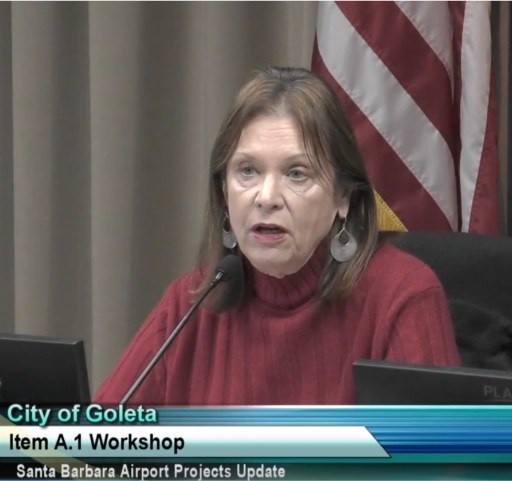
For all the complications Hastert said he couldn’t fix because of FAA rules, the public commenters — some with pilot experience — contradicted him: A retired United Airlines pilot said he had workable solutions Thompson had ignored. A private pilot said San Francisco had a preferred visual approach that appeared in the pilot flight books, which visiting pilots then knew to use. A woman married to a pilot said she’d seen San Francisco’s airport change the approaches due to complaints. Another speaker cited municipal codes enacted in San Jose to restrict aircraft between 11:30 p.m. and 6:30 a.m. Santa Monica had outlawed a particularly noisy jet one resident now saw landing at Santa Barbara.
The 800-pound gorilla in the room was the Santa Barbara City Council, which appoints the Airport Commission members and runs the airport. Mayor Paula Perotte asked Hastert how Goleta’s rep could get voting status, which they currently do not have, referring to S.B.’s city charter. There, Section 812 states that public entities other than the S.B. council could appoint members who could be non-residents. Offering her support, County Supervisor Joan Hartmann spoke, saying aircraft noise was the number one complaint from her 3rd District constituents, who make up two-thirds of Goleta. Hartmann suggested that a Santa Barbara Channel program was a model for financial incentives and marketing advantages that could reduce problems — whale strikes and also air and noise pollution in the case of the Channel program, which asks tanker ships to slow their speed.
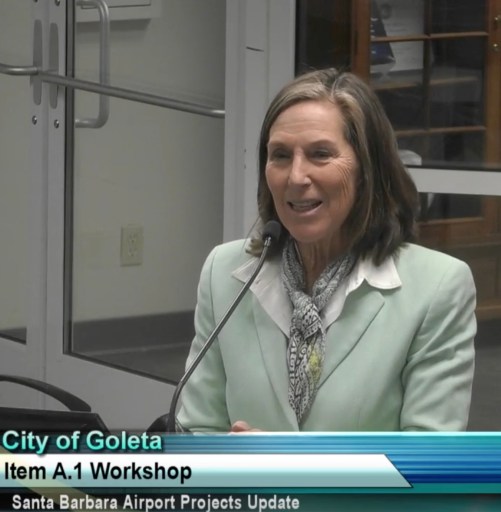
The issue of particulate matter pollutants was the only one to which Hastert had no response. One speaker, a UCSB professor who had lived in graduate student housing near the flight path, described how his son, born prematurely, had been compromised for life from having inhaled burned aircraft fuel. Still kept awake by aircraft noise in the converted garage he now lived in, the frustrated professor said he’d considered moving to a condo, but was disappointed to realize the noise and air pollution would continue there, too. “There is no excuse,” he said. “This is a quality of life issue. I hope the language changes and begins to convey the gravity of the issues we are addressing.”
Support the Santa Barbara Independent through a long-term or a single contribution.




You must be logged in to post a comment.